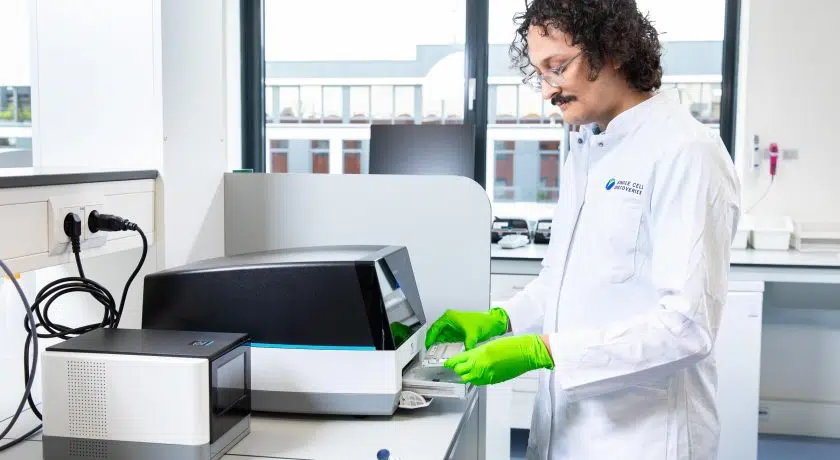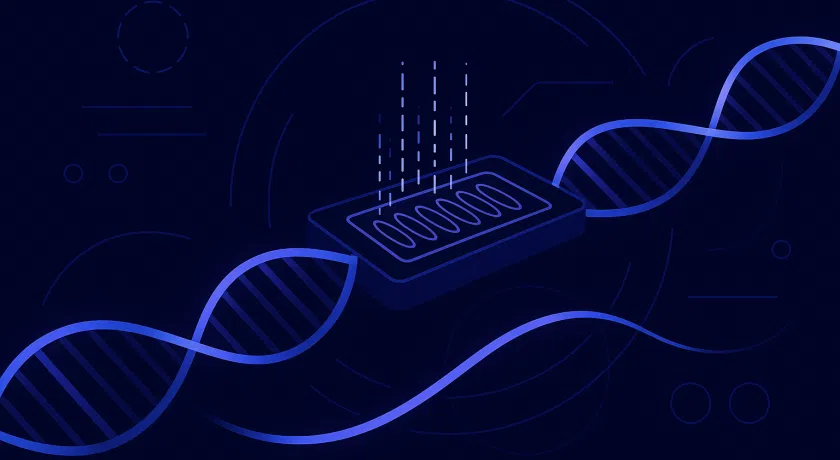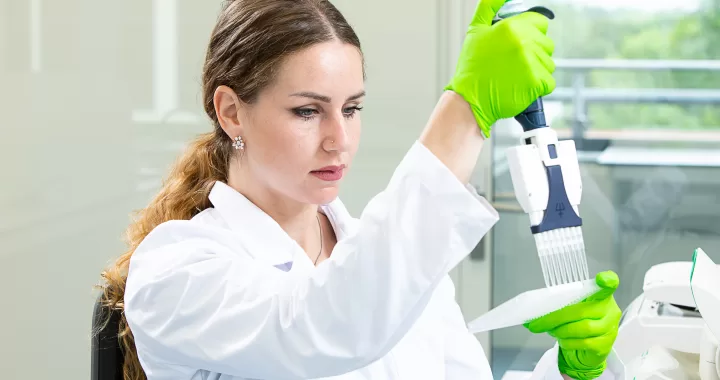
Single-cell RNA sequencing follows a 5-step process and this is true whichever sequencing platform or technology you use. This post is an overview of that process.
Step 1: Generate a single-cell suspension
Before single-cell sequencing can begin, your cells must be floating freely in suspension. This means that samples derived from primary tissue need to be dissociated into individual cells.
Common methodologies for tissue dissociation rely on enzymatic digestion and/or applying mechanical force to the tissue.
Step 2: Isolate the cells
In order to target and barcode cells individually, you must isolate the cells from each other. There are several ways to perform this single-cell isolation, but for this overview, we'll look at the two most important ones: sorting the cells and using microfluidics.
Method 1: Sort the cells with FACS
This sorting approach uses a Flow Cytometer (FACS) machine to sort single, live cells into the wells of a 384-well microwell plate. Usually, live/dead staining is added to the cells to ensure that we only select cells that are live and intact.
If you are interested in a particular cell type for your single-cell analysis, you can use the FACS to select only cells of the type you want. This can be done with a fluorescent reporter or an antibody.
Once each well contains one single cell, we are ready for the next step.
Method 2: Separate the cells with microfluidics
If you're using a droplet-based microfluidics approach, the single-cell suspension from step 1 is loaded onto a chip that contains barcoded beads and reagents.
By applying pressure to the cell suspension, the cells are forced through tiny tubes in the chip, one-by-one, which isolates them individually for barcoding in the next step. The droplet with the single cell then merges with a droplet with reagents and beads for the next stage.
Get the single-cell sequencing information guide
For a visual explanation of single-cell sequencing technologies, applications, and the most important practicalities you can find our information guide.
Step 3: Cell barcoding and amplification
The amount of mRNA in a single cell is so small that it needs to be amplified before we can analyze it. This amplification is done by PCR and/or IVT, by using primers that anneal to the mRNA.
To distinguish the individual cells during the data analysis, the mRNA of an individual cell must be barcoded. This barcode comes in the form of a short nucleotide sequence that is included in the amplification primers.
After amplification, all the cDNA molecules from a single cell will have the same barcode. You can then use this information to distinguish the cellular origin of each mRNA molecule during data analysis.
Step 4: NGS library preparation and sequencing
Now all mRNA molecules have been amplified and barcoded, the material from all the cells is pooled together into one library.
Another round of barcodes, this time specifically for the sample, is added, after which a Next Generation Sequencing (NGS) library is generated. Finally, the library is sent out for sequencing.
Step 5: Data analysis
The sequencing step generates thousands of sequencing reads for each individual cell.
This raw sequencing data is then mapped to the corresponding reference transcriptome, and Quality Control metrics are generated for each sample. Finally, the data is ready to be analyzed.
Because you often have hundreds to thousands of cells in each of your samples, the volume of data generated can be overwhelming. To be able to handle and analyze single-cell sequencing data you will need bioinformatics skills, special data analysis pipelines, and dedicated servers.
Once all the data has been mapped to the reference transcriptome, it is demultiplexed to the cellular level. This results in a count table with tens of thousands of rows for the detected genes and hundreds to thousands of columns for the individual cells.
The count table is used as input for dedicated single-cell analysis pipelines such as RaceID or Seurat. At Single Cell Discoveries, we have an optimized custom pipeline for this.
The algorithms behind these pipelines cluster the data based on cell-to-cell similarities, where each cluster represents a group of cells more similar to each other than to the rest of the cells in the dataset.
After clustering, differential gene expression analysis will tell us which genes are specifically over or under-represented in that cluster. This information is used to annotate the cell types in the data and to analyze and discover subpopulations of cells within existing cell types.
And that's the single-cell sequencing process.
Can single-cell sequencing help you?
Single-cell sequencing can be used to answer many scientific questions. In fact, the possibilities are endless! If you're wondering whether - or how - to apply single-cell sequencing in your field, we can help.
Contact us today or schedule a call to discuss your ideas.


